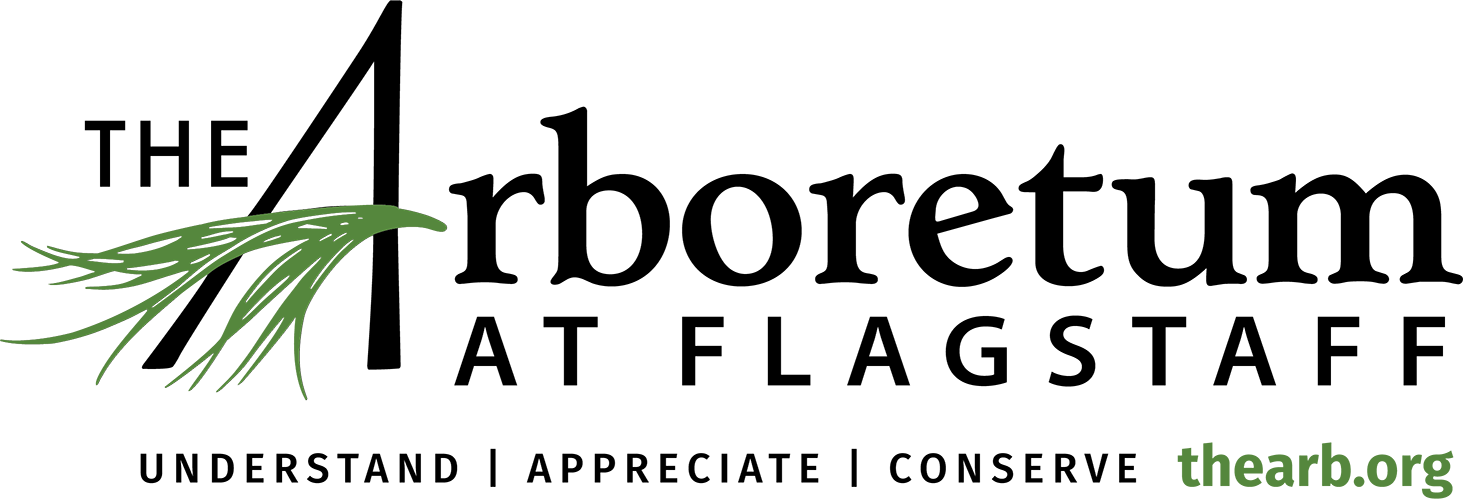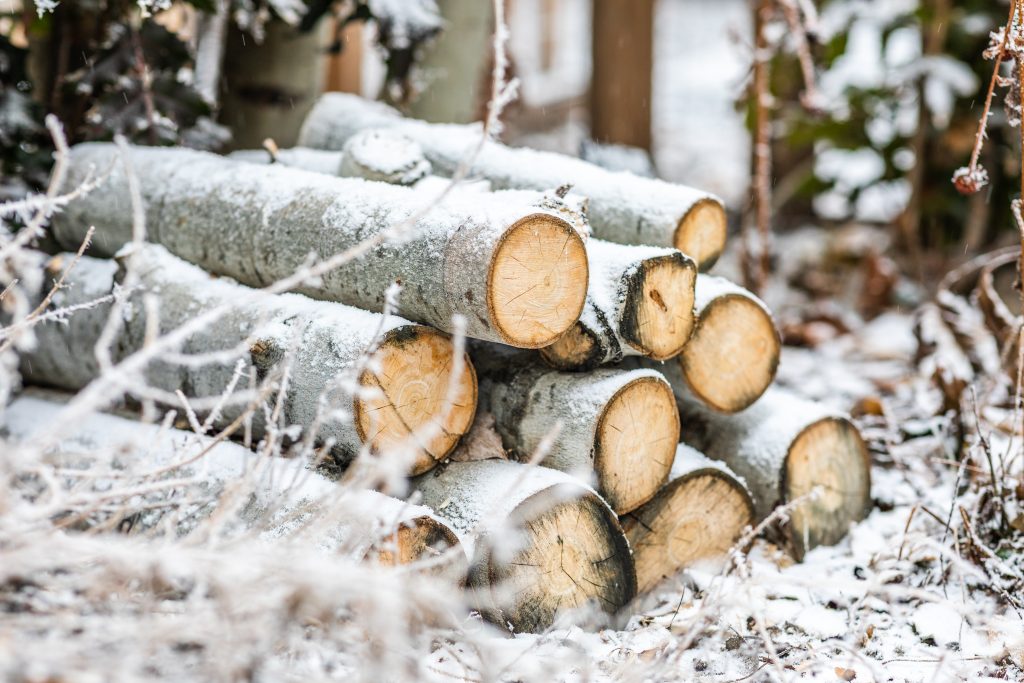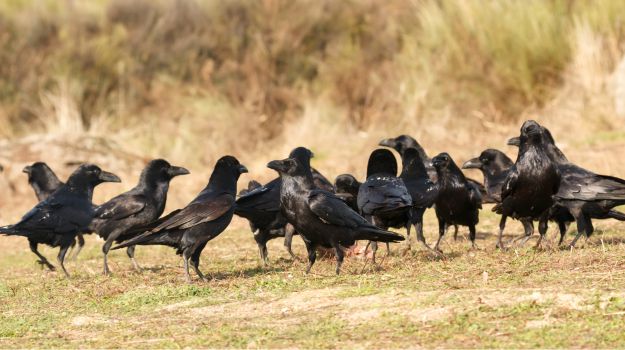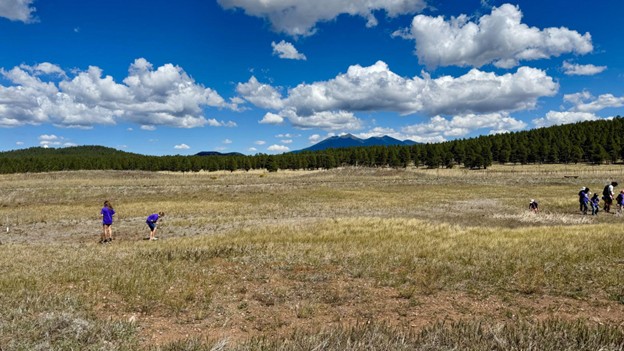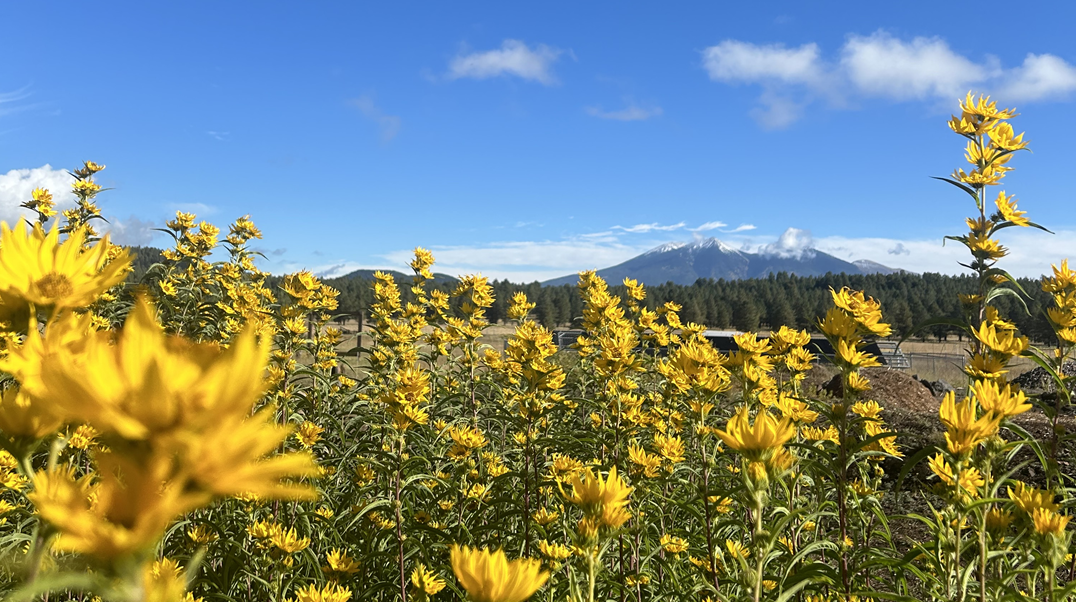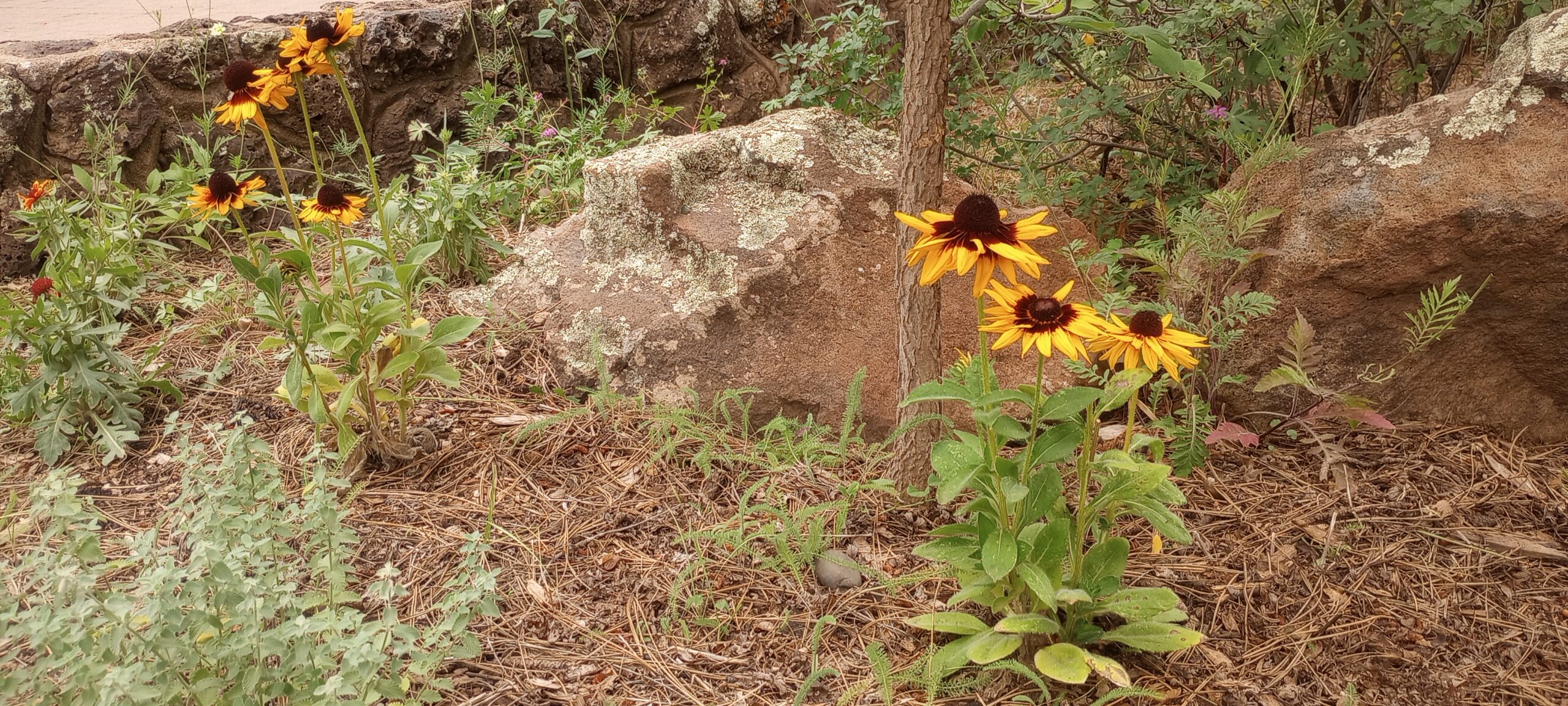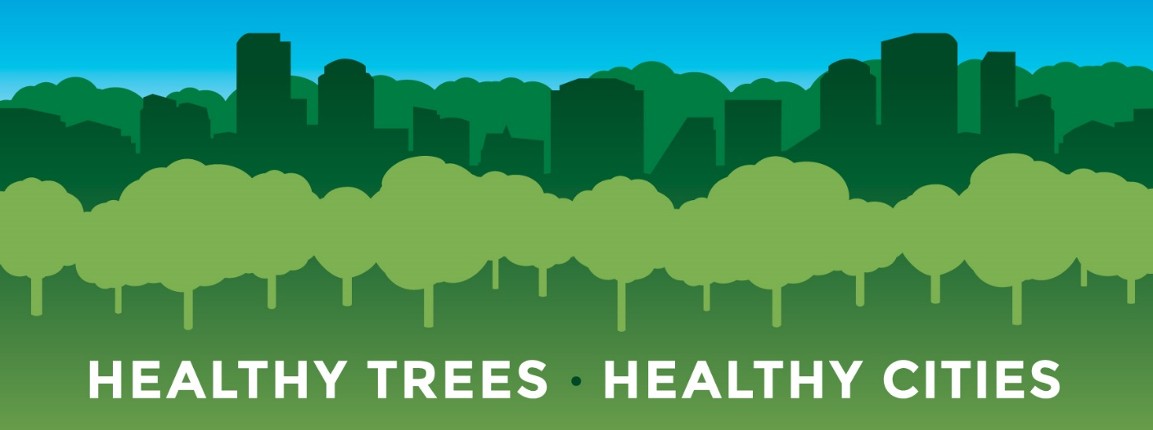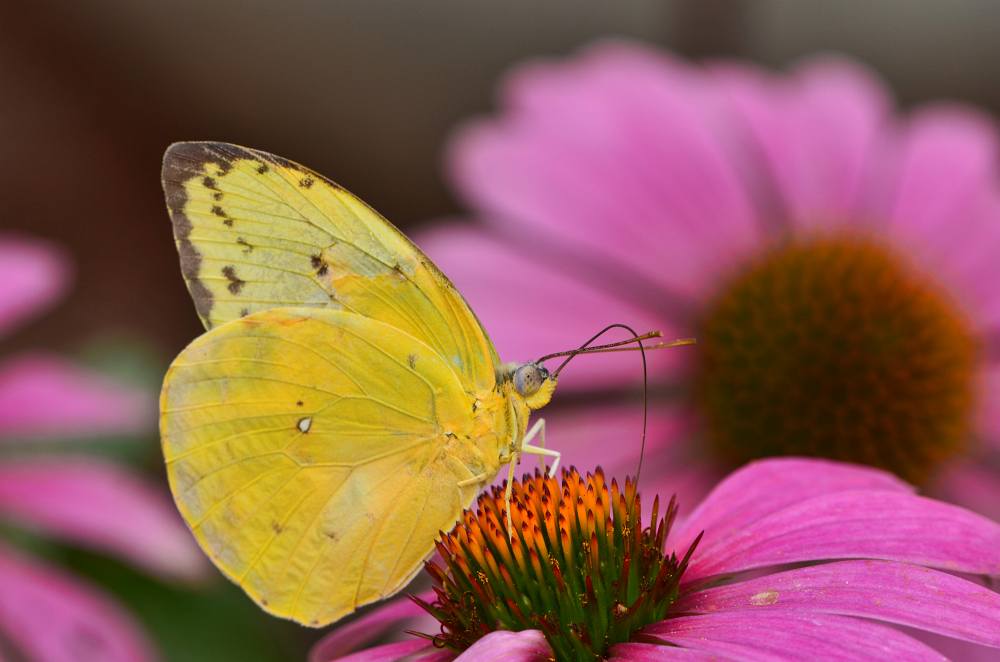Even this small aspen log stack has wildlife value. I have found insects, frogs and field mice nesting among them. Squirrels and songbirds also perch on them while eating. (photo credit: April O’Meara)
This article appeared in the Arizona Daily Sun on September 18, 2025.
Whether your home is surrounded by native vegetation or you live in a more urbanized area, gardeners are fortunate to have wildlife in their yards. Even amongst the sounds of police sirens, traffic and barking dogs, I am always astonished by the variety of birds, insects, reptiles and mammals I encounter in my small garden. To discover the diversity of wildlife in your garden, try sitting in silence, studying the sky and the earth and plants around you. In a short time, the world should come alive with non-human life.
Unfortunately, the future of many wildlife species is in jeopardy. As urban development continues to eliminate natural areas, habitat is fragmented or destroyed making it harder and harder for wildlife to access the resources they need to survive. One compelling and empowering solution to this problem is for gardeners to reestablish and/or maintain wildlife habitat intentionally in their yards.
Habitat gardening involves a few simple practices. Since the goal is to attract and sustain wildlife, it begins with a naturalistic landscape design. Your cultivated garden should mirror nature’s complexity by incorporating many species of plants, boulders, and variation in soil grade. If you have natural areas on your property, maintain them minimally, such as through removing noxious weeds and reducing fire hazards so these areas continue to support wildlife in the most natural way.
The plants that make up your backyard habitat should provide three basic elements animals need: food, cover, and water. Food is provided by growing plants that provide leaves, nectar, seeds, fruit or berries for animals to eat.
Here are some guidelines to follow when thinking about the characteristics of plants that have wildlife value:
- Songbirds need plants that produce abundant seeds and fruits. Remember to leave ripe seed heads in the fall on perennials and wildflowers so they can be enjoyed by songbirds.
- Small mammals prefer fruit, seeds, and foliage.
- Hummingbirds like trumpet shaped flowers in hues of red and orange that provide lots of nectar.
- Butterflies and bees like flat-topped or cluster flowers especially in blues, purples and pinks. To make it easier for pollinators to locate your plants, it is good to group plants of the same species in clusters instead of growing individual plants alone. It is also important to plant species with varying heights and bloom times to ensure nectar/pollen over a longer period of time.
Cover can be created by leaving brush and rock piles or by allowing trees and shrubs to grow together into dense thickets. These tangles of leaves and branches will become places of refuge for hiding, nesting, perching and raising young. If trimming is needed, use naturalistic pruning methods that involve the removal of selective branches while maintaining the plant’s natural form.
Water in some form and quantity is essential to wildlife survival. Chemical-free water features and bird baths are a great way to provide wildlife water, especially if you remove the stand and place the saucer on the ground so that ground dwelling animals can access it. The water should be changed at least every other day and the saucer given a good scrub when needed. This keeps the water fresh and free of pathogens and mosquitos. To provide honeybees and butterflies with water, create swallow areas using rocks in your water feature. This will allow these short legged insects access to drink.
By employing habitat gardening practices in your landscape, you will be on your way to turning your backyard into a wildlife sanctuary. Keep in mind that habitat gardening involves attracting both the animals people adore, such as bees, hummingbirds and butterflies, as well as those people commonly try to deter from their yards such as spiders, skunks, mice, snakes, and rabbits. As earth stewards, we should welcome these animals into our gardens, for they too are vital to a healthy ecosystem.
Nate O’Meara is the Executive Director of The Arboretum at Flagstaff.
